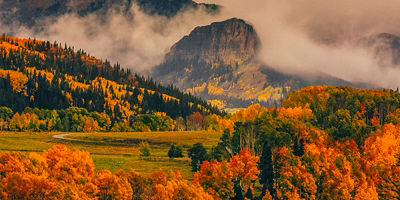
With long hair, a big beard, and a friendly grin, David Sligh looks every bit the hippie environmentalist. Occasionally, you’ll even find him acting the part, speaking at protests or waxing poetic about the beauty of nature. But don’t let the gentle demeanor fool you: As the conservation director for Charlottesville-based nonprofit Wild Virginia, Sligh is one of the shrewdest environmental lawyers in the state. And in the 40 years he’s spent fighting for public lands, he’s never seen a battle quite like this one.
The conflict in question started in 2014 when a handful of energy developers and investors decided to build a natural gas pipeline across Virginia. Dubbed the Mountain Valley Pipeline, it would start in West Virginia and end in North Carolina, traversing nearly 1,000 streams, rivers, and wetlands in the process. Despite protests from locals and environmental groups, construction began several years later. The results weren’t pretty. In some areas, swaths of forest have been clear-cut. In others, whole hillsides have been destroyed, leaving vast scars on the land. Mud and sediment from dig sites, Sligh notes, have been dumped on local landowners’ crops or pastures.
“You might say, ‘Oh, it’s just a little bit of dirt,’” Sligh adds, “but I saw one small stream—a habitat stream for an endangered fish—and they covered that stream for 3,600 feet in mud up to seven inches deep. And that wasn’t a unique occurrence.”
For Sligh, this is personal.
“My family has lived in the mountains of Virginia for as far back as we can trace. I grew up as a Boy Scout, hiking and camping in all these places my grandparents and parents were from,” he says. “So I have a pretty deep connection here. The Mountain Valley Pipeline is attempting to assault a lot of the places I care most about in the world.”
But instead of looking at the churned up hillsides or buried streams and feeling despair, Sligh says this fight leaves him more hopeful than many in his long career. He sat down with Public Lands to explain why.
PUBLIC LANDS: First, give us a little background. What makes this particular area of Virginia worth protecting?
DAVID SLIGH: The Southern Appalachians are a real hotspot for biodiversity. We have remaining populations of all kinds of species that are found nowhere else in the world, from plants to birds to aquatic life. The eastern brook trout, which is the only trout species native to the East, used to be pretty widespread. Now, these are some of the last strongholds of its remaining populations.
These forests are also some of the largest intact, somewhat connected natural areas in the eastern United States. We get beautiful, clean water and pristine streams because we take care of the watersheds here, and a lot of communities rely on them. So this land is a resource we’ve really got to hang onto.
But, to play devil’s advocate, we have to get our natural gas from somewhere, right?
Well, there are other gas pipelines—like the huge one that runs from the Gulf all the way to New York. It can pump gas back and forth wherever it’s needed. We’ve proven that another pipeline isn’t necessary, especially since the markets have changed since the pipeline was first proposed in 2014.
At the same time, we shouldn’t be putting infrastructure in the ground that is going to bind us to these sources of energy for another 30 or 40 or 50 years. We are in the midst of a transition to cleaner sources of energy. We get to decide how quickly we want to make that transition.






















